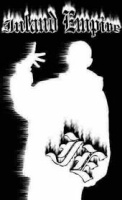McHaney gang San Bernardino county
4 posters
Page 1 of 1
 McHaney gang San Bernardino county
McHaney gang San Bernardino county
The Mc Haney Gang
The “Old West”, as we think of it, lasted a relatively short time from the 1860s to early years of the Twentieth Century. Writers of books,periodicals and movie scripts have perpetuated and glamorized myths about this period; none more so than those who have written of the trials and tribulations of the “outlaw gang”. Stories, told many times, have come to sanctify the gun-slinging-cowboy genre that we all grew up with. Here’s a few that you may not have heard about: Bert Alvord Gang, 1890s, train robbers, Arizona Territory -- John Daly Gang, 1860s, hanged for murder, Nevada Territory -- Hole-in-the-Wall Gang, 1860s-1910, Wyoming Territory, included Butch Cassidy --Bill Dolen Gang, 1894, Oklahoma Territory -- Rufus Buck Gang, 1890s, Arkansas. California had its share of gangs but I could find only one worth telling -- the McHaney Gang whose members resided in San Bernardino County and whose exploits combine both fact and fiction.
Their story begins with the arrival some time in the 1880s of two cowboys from Davis County Missouri -- James and William McHaney. The boys, known as Jim and Will, took up ranching and initially set up headquarters and summer range in the San Bernardino Mountains wintering cattle down on the warmer desert country to the east. In the spring and summer, they trailed their stock back to the main ranch which they later moved to the upper reaches of the Santa Ana Canyon. Other members of the gang entered the picture at various times -- the Button brothers who discovered Hidden Valley located in Joshua Tree National Park -- Charlie Martin, the son of a family of early settlers in the area -- George Meyers, a desert rancher and Ike Chestnut of which little is known. It was suspected that these boys were stealing beeves from the surrounding ranches but it was never proven. Most of what is known of their activity comes from interview with old timers of the area. One, Hardy Lord claims that as a boy he was hired by Charlie Martin to change the brand markings on cattle using a straight iron. Claims he got pretty good at it.
The gang eventually moved operations out of the mountains and on to the desert. One reason given for the move holds that a posse of irate ranchers formed-up and proceeded to the ranch where a pitched battle ensued. In another more likely version, the McHaneys moved to avoid legal problems over water rights in the canyon. They had a habit of damming and diverting water out of the canyon streams to water their cattle while legal water claims were held by the City of Redlands.
In 1879, Will McHaney, considered the more personable of the brothers,built a place east of the Morongo Valley and became the first white settler at the Twenty-nine Palms Oases. Though still involved with the gang, he spent most of his time prospecting and ranging cattle near the Oases. His brand was a five pointed star which he registered with the county.
Without mountain pasture for hot weather months it’s not clear how James McHaney and the other members operated. It is believed by some that they kept their stock in Hidden Valley; a small well protected area surrounded by rocky mountainous terrain discovered by the Button brothers. And that they added horse trading to the business. We do know that George Meyers ranged cattle on the desert and registered his brand and may have eventually bought-out the McHaney desert cattle operation.
All public lands were open to cattle during this period. It was called “the open range”. Natural water sources and availability of forage not property boundaries or fences determined the extent of livestock activity. The once-a-year-roundup served to separate each rancher’s cattle and brand the calves before trailing to summer pastures in the higher country. If you were out there to steal another ranchers stock you best grab a few and ship them to market as quick as possible and not allow your re-branded stock to mingle on the open range.
The writer Louis Lamour mentions Hidden Valley in his novel “Mojave Crossing”. The hero, Tell Sackett, was forced to cross the desert on foot after losing his horse. Tired and thirsty, he stumbled into the gang’s Hidden Valley hideout and was confronted by Charlie Button who after deciding he was “no lawman” invited him to spend the night. I don’t know where Lamour got the story but…?
Later, around 1888, Jim McHaney decides to try his hand at mining gold. Some accounts say that he and Charlie Martin forced, at gun-point, a fellow by the name of Frank L James to sign over his claim to the Desert Queen Mine, and that after he signed Martin shot and killed him. Later Martin, with Jim McHaney as his witness, pleaded self-defense and was found not guilty. I checked the San Bernardino County Court records and couldn’t find any support for the story. The only case that I could find against Charlie Martin as a defendant in San Bernardino County was for riding his horse over a squaw. In that case, the judge fined Charlie a few dollars and commented that the squaw should have got out of his way.
An article in the Redlands Citrograph (May 11, 1895) states that, “It has now been definitely settled that the rich mines recently located by the McHaneys and others are in San Bernardino County”. Then in August another article, “James McHaney, one of the owners of the now famous Desert Queen Mine was in San Bernardino on Monday, bringing in another sack of gold –the product of four and one-half days’ clean-up worth $8,000.” It’s clear from the articles that Jim McHaney became a successful miner and owner, or at least part owner, of a well documented high producing gold mine. How he came by it will probably remain a mystery
The stories about Charlie Martin are fairly well documented. We know that he got in a lot of trouble with the law in his youth and in 1877 was found guilty of robbing a drunk and sentenced to five years in the state penitentiary. After he got out he and Willie Button homesteaded two quarter sections of land * near Angelus Oaks on Highway 38 and commenced raising cattle. If Martin and Button were involved in stealing and re-branding livestock with their neighbor Jim McHaney it would have been during the period from 1882 to 1888. Some suspect, however, that Martin was more a moonshine bootlegger than rancher. However, the ranch proved profitable and expanded to become known by the Heart Bar brand. Martin sold his interest to the ranch in 1914.
Charlie Martin was full of surprises in 1917 he was appointed Chief of Police for the city of San Bernardino. He lasted only a few months on the job and then retired to his homestead. The Heart Bar Ranch headquarters located at the head of Santa Ana Canyon is now a Forest Service campground.
James McHaney was arrested on March 10, 1900, for passing counterfeiting gold coins, in the city of San Bernardino. McHaney claimed he got them in Redlands when he cashed a $75.00 check. “I came by them honestly and did nothing wrong”, he said. A few days later Will McHaney, was arrested at the Gang’s hide-out in the Whitewater area near San Gorgonio Pass. The camp was discovered by a Forest Ranger on patrol who related the information to city authorities. U.S. Marshals investigated and arrested Will McHaney and another gang member. The Marshals believed that the actual stamping and gold plating was done in one of the canyons near the hide-out. Will had ordered chemicals for electro plating which was used as evidence.
James McHaney was found guilty and sentenced to 17 year in prison. I don’t know what happened to Will. He may have pleaded-out his brother and saved himself from prison time. Or he may have served a shorter sentence and then, as some say, retired to his Twenty-nine Palms Oases and lived an honest life thereafter.
The “Old West”, as we think of it, lasted a relatively short time from the 1860s to early years of the Twentieth Century. Writers of books,periodicals and movie scripts have perpetuated and glamorized myths about this period; none more so than those who have written of the trials and tribulations of the “outlaw gang”. Stories, told many times, have come to sanctify the gun-slinging-cowboy genre that we all grew up with. Here’s a few that you may not have heard about: Bert Alvord Gang, 1890s, train robbers, Arizona Territory -- John Daly Gang, 1860s, hanged for murder, Nevada Territory -- Hole-in-the-Wall Gang, 1860s-1910, Wyoming Territory, included Butch Cassidy --Bill Dolen Gang, 1894, Oklahoma Territory -- Rufus Buck Gang, 1890s, Arkansas. California had its share of gangs but I could find only one worth telling -- the McHaney Gang whose members resided in San Bernardino County and whose exploits combine both fact and fiction.
Their story begins with the arrival some time in the 1880s of two cowboys from Davis County Missouri -- James and William McHaney. The boys, known as Jim and Will, took up ranching and initially set up headquarters and summer range in the San Bernardino Mountains wintering cattle down on the warmer desert country to the east. In the spring and summer, they trailed their stock back to the main ranch which they later moved to the upper reaches of the Santa Ana Canyon. Other members of the gang entered the picture at various times -- the Button brothers who discovered Hidden Valley located in Joshua Tree National Park -- Charlie Martin, the son of a family of early settlers in the area -- George Meyers, a desert rancher and Ike Chestnut of which little is known. It was suspected that these boys were stealing beeves from the surrounding ranches but it was never proven. Most of what is known of their activity comes from interview with old timers of the area. One, Hardy Lord claims that as a boy he was hired by Charlie Martin to change the brand markings on cattle using a straight iron. Claims he got pretty good at it.
The gang eventually moved operations out of the mountains and on to the desert. One reason given for the move holds that a posse of irate ranchers formed-up and proceeded to the ranch where a pitched battle ensued. In another more likely version, the McHaneys moved to avoid legal problems over water rights in the canyon. They had a habit of damming and diverting water out of the canyon streams to water their cattle while legal water claims were held by the City of Redlands.
In 1879, Will McHaney, considered the more personable of the brothers,built a place east of the Morongo Valley and became the first white settler at the Twenty-nine Palms Oases. Though still involved with the gang, he spent most of his time prospecting and ranging cattle near the Oases. His brand was a five pointed star which he registered with the county.
Without mountain pasture for hot weather months it’s not clear how James McHaney and the other members operated. It is believed by some that they kept their stock in Hidden Valley; a small well protected area surrounded by rocky mountainous terrain discovered by the Button brothers. And that they added horse trading to the business. We do know that George Meyers ranged cattle on the desert and registered his brand and may have eventually bought-out the McHaney desert cattle operation.
All public lands were open to cattle during this period. It was called “the open range”. Natural water sources and availability of forage not property boundaries or fences determined the extent of livestock activity. The once-a-year-roundup served to separate each rancher’s cattle and brand the calves before trailing to summer pastures in the higher country. If you were out there to steal another ranchers stock you best grab a few and ship them to market as quick as possible and not allow your re-branded stock to mingle on the open range.
The writer Louis Lamour mentions Hidden Valley in his novel “Mojave Crossing”. The hero, Tell Sackett, was forced to cross the desert on foot after losing his horse. Tired and thirsty, he stumbled into the gang’s Hidden Valley hideout and was confronted by Charlie Button who after deciding he was “no lawman” invited him to spend the night. I don’t know where Lamour got the story but…?
Later, around 1888, Jim McHaney decides to try his hand at mining gold. Some accounts say that he and Charlie Martin forced, at gun-point, a fellow by the name of Frank L James to sign over his claim to the Desert Queen Mine, and that after he signed Martin shot and killed him. Later Martin, with Jim McHaney as his witness, pleaded self-defense and was found not guilty. I checked the San Bernardino County Court records and couldn’t find any support for the story. The only case that I could find against Charlie Martin as a defendant in San Bernardino County was for riding his horse over a squaw. In that case, the judge fined Charlie a few dollars and commented that the squaw should have got out of his way.
An article in the Redlands Citrograph (May 11, 1895) states that, “It has now been definitely settled that the rich mines recently located by the McHaneys and others are in San Bernardino County”. Then in August another article, “James McHaney, one of the owners of the now famous Desert Queen Mine was in San Bernardino on Monday, bringing in another sack of gold –the product of four and one-half days’ clean-up worth $8,000.” It’s clear from the articles that Jim McHaney became a successful miner and owner, or at least part owner, of a well documented high producing gold mine. How he came by it will probably remain a mystery
The stories about Charlie Martin are fairly well documented. We know that he got in a lot of trouble with the law in his youth and in 1877 was found guilty of robbing a drunk and sentenced to five years in the state penitentiary. After he got out he and Willie Button homesteaded two quarter sections of land * near Angelus Oaks on Highway 38 and commenced raising cattle. If Martin and Button were involved in stealing and re-branding livestock with their neighbor Jim McHaney it would have been during the period from 1882 to 1888. Some suspect, however, that Martin was more a moonshine bootlegger than rancher. However, the ranch proved profitable and expanded to become known by the Heart Bar brand. Martin sold his interest to the ranch in 1914.
Charlie Martin was full of surprises in 1917 he was appointed Chief of Police for the city of San Bernardino. He lasted only a few months on the job and then retired to his homestead. The Heart Bar Ranch headquarters located at the head of Santa Ana Canyon is now a Forest Service campground.
James McHaney was arrested on March 10, 1900, for passing counterfeiting gold coins, in the city of San Bernardino. McHaney claimed he got them in Redlands when he cashed a $75.00 check. “I came by them honestly and did nothing wrong”, he said. A few days later Will McHaney, was arrested at the Gang’s hide-out in the Whitewater area near San Gorgonio Pass. The camp was discovered by a Forest Ranger on patrol who related the information to city authorities. U.S. Marshals investigated and arrested Will McHaney and another gang member. The Marshals believed that the actual stamping and gold plating was done in one of the canyons near the hide-out. Will had ordered chemicals for electro plating which was used as evidence.
James McHaney was found guilty and sentenced to 17 year in prison. I don’t know what happened to Will. He may have pleaded-out his brother and saved himself from prison time. Or he may have served a shorter sentence and then, as some say, retired to his Twenty-nine Palms Oases and lived an honest life thereafter.

dstrm300- Made Member
- Number of posts : 1201
Registration date : 2008-01-24
Age : 36
Location : Rialto/San Bernardino CalifornIE
 Re: McHaney gang San Bernardino county
Re: McHaney gang San Bernardino county
Good Find.

Forum Gawd- Boss
- Number of posts : 4842
Registration date : 2009-09-16
Age : 30
Location : Athol Street Nd Hemlock.!!!
 Re: McHaney gang San Bernardino county
Re: McHaney gang San Bernardino county
Yippee-ki-yay, motherfucker!!!!! Good read!!!
MCHANEY GANGA CONTROLA TODO Y~QUE CON/SAFOS
MCHANEY GANGA CONTROLA TODO Y~QUE CON/SAFOS

OldBlue- Made Member
- Number of posts : 762
Registration date : 2009-03-11
Location : Pit of HELL
 Similar topics
Similar topics» San Bernardino County to have its first gun-buyback program
» San Bernardino County drug bust
» San Bernardino County Gun Buyback nets 1,424 firearms
» TREND OF FEWER WHITES EXPECTED IN SAN BERNARDINO COUNTY
» Grand Jury: San Bernardino County should review plan on gangs
» San Bernardino County drug bust
» San Bernardino County Gun Buyback nets 1,424 firearms
» TREND OF FEWER WHITES EXPECTED IN SAN BERNARDINO COUNTY
» Grand Jury: San Bernardino County should review plan on gangs
Page 1 of 1
Permissions in this forum:
You cannot reply to topics in this forum
 Home
Home





» Inland Empire Gang List
» Perris Street Gangs
» SOUTHSIDE COLTON LA PALOMA PARK LOKOS Ost GANG
» MCP13 WHO ARE THEY?
» Gangs that have died out
» Fontana pt2
» Inactive Fontana gangs
» IE gangs in the 90s